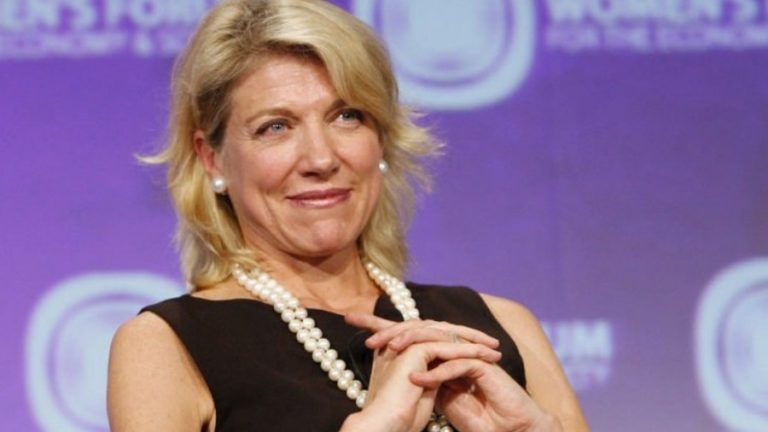The Balance of Power Is Changing in the US Supreme Court
Following the death of US Supreme Court Judge Ruth Bader Ginsburg, known for her extremely liberal position, there was little doubt that her replacement would hold more conservative views. However, Donald Trump, in accordance with the US Constitution, has nominated someone who arouses fierce hatred in globalists and Democrats – Amy Coney Barrett, an active supporter of family traditions, a mother of seven (two adopted from Haiti), and a Catholic. The process for her approval could begin on 12 October.
Barrett is against same-sex marriage and abortion, and she is also opposed to the feminist point of view, since she has prepared documents on sexual harassment in universities and argues that men have the same rights as women, therefore unfounded accusations by women are not only inadmissible, but also risk criminal prosecution for false denunciation.
If her nomination is approved by the Senate, then the Republicans will have a clear majority – six judges against three. Given that these Supreme Court positions are for life, unless there is a voluntary resignation, the conservative’ position in the US will strengthen.
Donald Trump himself is making no secret of the fact that he’d like to see it happen before the presidential election scheduled for 3 November. But even if it doesn’t happen, the balance will still be in favour of the Republicans – five against three.
The structure of the US Supreme Court
The US Supreme Court is made up of nine justices. The current Chief Justice is John Glover Roberts Jr, who has held the post since 2005. Roberts represents the Republican Party. There is an interesting story about him. During Barack Obama’s inauguration, he read the text of the presidential oath incorrectly and Obama repeated him word for word. Because of this, the oath had to be repeated.
Another four justices belong to the conservative camp, two of whom were appointed under Trump.
Clarence Thomas is a Catholic Afro-American. In his youth, he took part in protests against race discrimination. He represents the Republican Party and is considered to be one of the most conservative justices in recent decades and a hardliner.
Samuel Anthony Alito Jr is a Catholic from an Irish immigrant family, a supporter of family values who espouses conservative views, and a member of the Republican Party.
Neil McGill Gorsuch is a native of Colorado and studied in the same class as Barack Obama at Harvard University. He represents the Republican Party and was appointed to the post of Supreme Court Justice under Trump in 1917. He is a supporter of traditional family values.
Brett Kavanaugh, a Catholic of Irish descent and a supporter of family traditions, was nominated by Donald Trump in July 2018 and approved by the Senate by a vote of 50 to 48. His appointment was accompanied by scandal. Kavanaugh was accused of sexual harassment that allegedly took place in the early 1980s. An FBI investigation found no wrongdoing. Many believe that the accusations were initiated by the Democrats in order to discredit the judge and prevent his appointment to the Supreme Court.
Now let’s take a look at the justices who represent the interests of the Democrats and globalists.
Stephen Breyer is a native of San Francisco, California, and of Jewish descent. He is a member of the Democratic Party and maintains a liberal position.
Sonia Sotomayor is of Puerto Rican origin and, in 2009, became the first Latin American Supreme Court justice. She represents the Democratic party.
Elena Kagan has been a member of the Supreme Court since 2010. She is a practising Jew and represents the Democratic Party.
Globalist hysteria
It is telling that the globalists started attacking Barrett immediately. Among other things, a member of the BLM movement, Ibram X Kendi, called her a “white colonizer” for adopting two children of Haitian descent.
Kendi himself received a $10 million grant from Twitter CEO Jack Dorsey in August 2020. Officially, the money is being donated to Boston University’s Center for Antiracist Research, which is run by Kendi. Earlier, in 2019, he came up with a proposal to introduce a special amendment into the US Constitution that would establish anti-racist legislation and create a special anti-racist department. The proposal was called an attempt to form a totalitarian system along the lines of Orwell and an attack on the rights and freedoms of American citizens.
Kendi also has the support of Amazon’s Jeff Bezos, who is promoting his book, and The Atlantic magazine’s Jeffrey Goldberg, who publishes his articles.
New York Magazine called Barrett nothing short of an extremist, mentioning her attitude towards immigration, the right to bear arms, and other conservative views. Noting the shift in balance at the Supreme Court, the article stated that “Republicans have engaged in a hypocritical power play that threatens to undermine the legitimacy of the judiciary.”
The New York Times, which is fiercely critical of Trump and a mouthpiece for the liberals, is scaring people with horror stories about what will happen if Barrett becomes a justice of the Supreme Court. “With a 6-3 conservative court, the country is at risk of having the few remaining tools that permit some limits on the power of business — like labor unions and environmental legislation — weakened still further. The court’s future decisions could give corporations even more weight and workers less, by blocking potential legislation that might mitigate the impact of unfettered capitalism and staggering inequality… The conservatism of the court could pose a new barrier to future, more sweeping efforts at social reform — for example, a broader national health system. And it could mean that — as has so often been the case in recent years — workers, ordinary citizens and the very possibility of democratic governance will again lose out.”
So, globalists are trying to influence public opinion. In Congress, however, the nomination is being considered by the Senate Committee on the Judiciary, the chairman of which is Republican Lindsey Graham. In total, there are 12 Republicans on the committee and only 10 Democrats. During deliberations, Democrat Dianne Feinstein could play an active role in opposing the nomination. However, it is hardly likely that the committee will be able to block Barrett’s nomination. Even if it issues a negative recommendation, the established procedure is that the final decision rests with the US president. All the committee can do is delay her appointment.







